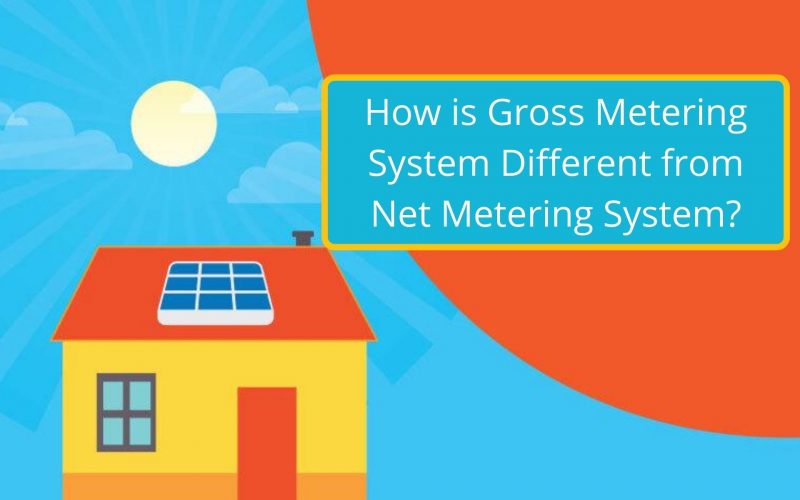In the earlier post, we learned about net metering system for residential rooftop system. Let’s have a quick recap on how it works.
Net Metering is a system of electricity billing that gives your solar power systems the credit for making electricity. When solar panels produce excess power, with net metering system, you can sell that power to the grid.
This system only works with grid-tied solar power systems. If the energy generated is more than the amount of energy consumed, the owner gets compensated for the excess amount. And, if the amount of energy consumed is more than the amount of energy generated, the owner only pays for the net amount.
As the net metering system is just a promotional initiative for solar energy, it is not going to stay in for long. In fact, there is another system that is in discussion for utility billing called ‘gross metering’.
With gross metering, all the electricity generated by the solar power system is sent to the grid and all the electricity required for consumption by the consumer is imported from the grid. The consumers are paid for the electricity exported to the grid at specific rates decided by the different state regulators. These vary state to state.
Now let’s see how the gross metering system work
If the consumer with a solar panel system has a monthly consumption of 500 units of energy and the solar system generate 400 units of electricity. At the end of every month, he will be charged for total consumed energy which is 500 units at a normal tariff. The energy generated from the solar rooftop plan, that is 400 unit, will be directly sent to the grid. It is recorded by a separate gross meter and distribution companies pay for all the electricity produced by the solar panels, at the pre-determined rate, called the feed-in-tariff rate.
As the gross metering system is new, it is available to commercial, industrial and institutional solar owners.
Have we missed anything? Let us know in the comment section below.

